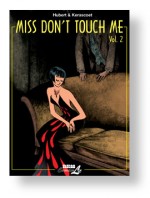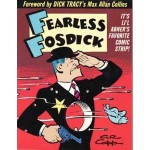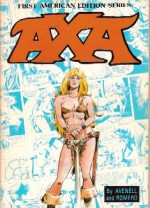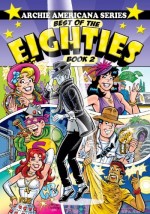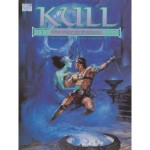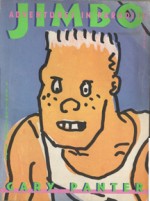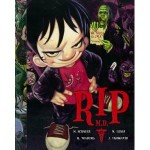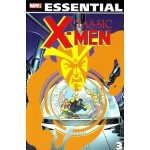
By Roy Thomas, Neal Adams, Werner Roth, Steve Englehart, Tom Sutton & various (Marvel)
ISBN: 978-0-7851-3060-4
X-Men was never one of young Marvel’s top titles but it did secure a devout and dedicated following, with the frantic, freakish energy of Jack Kirby’s heroic dynamism comfortably transitting into the slick, sleek prettiness of Werner Roth as the blunt tension of hunted outsider kids settled into a pastiche of the college and school scenarios so familiar to the students who were the series’ main audience.
The core team still consisted of tragic Scott Summers/Cyclops, ebullient Bobby Drake/Iceman, wealthy golden boy Warren Worthington/Angel and erudite, brutish genius Henry McCoy/Beast in training with Professor Charles Xavier, a wheelchair-bound (and temporarily deceased) telepath dedicated to brokering peace and integration between the masses of humanity and the gradually emerging race of mutant Homo Superior.
Jean Grey/Marvel Girl had recently returned to the team which was also occasionally supplemented by cosmic powerhouse Havok and magnetic minx Polaris although they were usually referred to as Alex Summers and Lorna Dane.
However by the time of this final massive black and white tome (collecting issues #54-66 of the turbulent teens’ original series, guest appearances in Amazing Spider-Man #92, Incredible Hulk #150 and #161, Marvel Team-Up #4 and spin-off solo series The Beast from Amazing Adventures #11-17), despite some of the most impressive and influential stories and art of the decade, the writing was definitely on the wall for Marvel’s misunderstood mutants…
The mayhem begins with ‘Wanted: Dead or Alive… Cyclops!’ (X-Men #54, March 1969, by Arnold Drake, Don Heck & Vince Colletta), which introduced Scott’s kid brother Alex just in time for the lad to be kidnapped by Egyptian acolytes of The Living Pharaoh. It appears the boy had a hidden power the Pharaoh coveted, which necessitated framing the X-Men’s leader…
At that time the back of the X-Men comic was running “untold origins†of the team, and ‘The Million Dollar Angel’ by Drake & Werner Roth, began the tale of Warren Worthington III, a precocious rich boy rushed off to prep school where he grew wings and concealed them by making himself the most despised and lonely person on campus…
Roy Thomas returned as scripter for #55’s ‘The Living Pharaoh!’ illustrated by Heck, Roth & Colletta which saw the full team follow the Summers brothers to the Valley of the Kings and soundly thrash the faux king’s minions only to have the new mutant’s unsuspected power go wild. Meanwhile, in ‘Where Angels Fear to Tread!’ (Thomas, Roth & Sam Grainger) little Warren has left school and planned a superhero career until an atomic accident brought him into contact with a couple of kids code-named Cyclops and Iceman…
Nobody knew it at the time – and sales certainly didn’t reflect it – but with X-Men #56 superhero comics changed forever. Neal Adams had stunned the comics buying public with his horror anthology work and revolutionary adventure art on Green Lantern/Green Arrow and Batman, but here, with writer Thomas in iconoclastic form, they began to expand the horizons of graphic narrative with a succession of boldly innovative, tensely paranoid dramas that pitted mutants against an increasingly hostile world.
Pitched at an older audience, the run of gripping, addictively beautiful epics captivated and enchanted a small band of amazed readers – and were completely ignored by the greater mass of the buying public. Without these tales the modern X-phenomenon could not have existed, but they couldn’t save the series from cancellation. The cruelest phrase in comics is “ahead of its time…â€
‘What is… the Power?’ (Thomas, Adams & inker extraordinaire Tom Palmer) revealed the uncanny connection between Pharaoh and Alex Summers and as the Egyptian mastermind transformed into a colossal Living Monolith, the terrified boy’s mutant energies were unleashed with catastrophic results. At the back, the unbalanced Angel had become ‘The Flying A-Bomb!’ but luckily he was defused in time to become the newest X-Man.
Issue #57 brought back the team’s most relentless adversaries in ‘The Sentinels Live!’ as a public witch-hunt prompted the mutant hunting robots to hunt down X-Men across the globe. Amongst the first victims were magnetic Lorna Dane and Alex Summers but the sinister Sentinels had their unblinking eyes set on all mutants… That issue also saw a rundown on Marvel Girl’s abilities in the last back-up feature ‘The Female of the Species!’. From the next issue Thomas and Adams would have an entire issue to play with…
‘Mission: Murder!’ ramped up the tension as the toll of fallen mutants increased, with Iceman, the Pharaoh, Angel and Mesmero all falling to the murderous mechanoids, but when their human controller discovered an unsuspected secret the automatons struck out on their own…
With all other mutants in the Marvel universe captured, Cyclops, Marvel Girl and Beast were reduced to a suicidal frontal assault in ‘Do or Die, Baby!’, pulling off a spectacular victory, but only at the cost of Alex Summers, now known as Havok…
Badly injured, Alex was brought to an old colleague of Professor Xavier’s named Karl Lykos – a discreet physician hiding a dark secret. ‘In the Shadow of Sauron!’ revealed that the not-so-good doctor had been bitten by Pterodactyls from the Antarctic Savage Land and become an energy vampire. Now with a powerful mutant to feed on, his addiction fully manifested as Lykos transformed into a winged saurian with hypnotic powers, determined to sate himself on the other X-Men.
After a shattering struggle in ‘Monsters Also Weep!’ Lykos was defeated, instinctively flying South to the Savage Land. Drained of his power he reverted to human form and when the X-Men tracked him down the tormented leech chose suicide rather than become Sauron once more. Searching for his body Angel was also attacked by Pteranodons and crashed to the bottom of a vast crevasse, precipitating the mutants into another primordial encounter with wild man Ka-Zar as ‘Strangers …in a Savage Land!’
Marooned once more in a lost world Angel was healed by the enigmatic Creator, a wounded genius protecting the Savage Land’s mutant population with his own team of X-Men counterparts. As his team-mates search for him the Winged Wonder switched allegiance, unaware that his benefactor was actually the X-Men’s oldest enemy…
‘War in the World Below!’ saw the villain’s plans revealed and finally thwarted by the heroes and Ka-Zar, leaving the returning team to tackle a controversial Japanese extremist in ‘The Coming of Sunfire!’ (#64, with stalwart Don Heck doing an impressive fill-in job for Adams) whilst the next issue brought back the long-dead Professor Xavier – only to nearly kill him again in the Denny O’Neil scripted alien invasion yarn ‘Before I’d Be Slave…’ an astounding epic that ended Neal Adams’ artistic tenure in grand style.
All the staffing changes were hints of a bigger shake-up. With X-Men #66 (March 1970), the series was cancelled despite all the frantic and radical innovations crafted by a succession of supremely talented creators. ‘The Mutants and the Monster’ by Thomas, Sal Buscema & Sam Grainger, sent the team hunting for Bruce Banner in an attempt to save Professor X from a coma induced by his psychic battle against the aliens. Unfortunately when you hunt Banner what you usually end up with is an irate Incredible Hulk…
Although gone, the mutants were far from forgotten. The standard policy at that time to revive characters that had fallen was to pile on the guest-shots and reprints. X-Men #67 (December 1970) saw them return, re-presenting early classics and with Amazing Spider-Man #92 (January 1971), individually and collectively the Merry Mutants began their comeback tour. ‘When Iceman Attacks’ (Stan Lee, Gil Kane & John Romita Sr.) concluded the Amazing Arachnid’s battle against corrupt political boss Sam Bullit, as the ambitious demagogue convinced the youngest X-Man that Spider-Man was a kidnapper. Despite being a concluding chapter, this all-out action extravaganza efficiently recaps itself and is perfectly comprehensible to readers.
Alec Summers had left the X-Men, terrified of his uncontrollable cosmic power, to isolate himself in the deserts of New Mexico. When Lorna went looking for him in ‘Cry Hulk, Cry Havok!’(Incredible Hulk #150 April 1972, Archie Goodwin, Herb Trimpe & John Severin) she encountered a menacing biker gang and an Emerald Giant violently protective of his privacy. Mercifully Havok proved a match for the rampaging titan…
The previous month Marvel had launched a reinvented X-Man in a solo series as a response to the world horror boom which shifted general comicbook fare from bright shiny costumed heroes to dark and sinister monsters. Premiering in Amazing Adventures #11 (March 1972), written by Gerry Conway and illustrated by the incredibly effective team of Tom Sutton & Syd Shores, ‘The Beast!’ told how the brilliant Hank McCoy had left Xavier’s school and taken a research position at the conglomerate Brand Corporation.
Using private sector resources to research the causes of genetic mutation McCoy became embroiled in industrial skullduggery and to hide his identity used his discoveries to “upgrade†his animalistic abilities – temporarily turning himself into a fearsome anthropoid creature with startling new abilities. At least it was supposed to be temporary…
Steve Englehart assumed the writing reins and monster maestro Mike Ploog took the inker’s chair for ‘Iron Man: D.O.A.’ as McCoy, trapped in a monstrous new shape, took extreme measures to appear human as he desperately strove to find a cure for his condition. Unfortunately Brand was riddled with bad characters and when Tony Stark came to visit it was inevitable that the Beast and Iron Man would clash…
Incomprehensibly that battle led to Iron Man’s death – or so McCoy thought. In fact the monster had been mesmerized by the villainous Mastermind in a scheme to force the outcast to join the Brotherhood of Evil Mutants. ‘Evil is All in Your Mind!’ (Englehart, Sutton & Frank Giacoia) also reintroduced two characters from the wildest fringes of Early Marvel continuity who would both play major roles in months and years to come. Patsy Walker was an ideal girl-next-door whose wholesome teen-comedy exploits had delighted readers for decades since her debut in Miss America #2 (Nov. 1944).
She starred in seven separate comicbooks until 1967. Now she joined the cast of the Beast as the tag-along wife of her boyhood sweetheart Buzz Baxter who had grown from an appealing decent goof to a rather daunting military martinet and Pentagon liaison. As McCoy was throwing off the psychic influence of Mastermind Captain Baxter was laying plans to capture the maligned mutate…
Meanwhile the other X-Men were not forgotten. New horror-star Morbius, the Living Vampire was making things tough for Spider-Man in Marvel Team-Up. In #4 (September 1972) the Human Torch was replaced by the mutant team as the Wall-crawler’s partner in ‘And Then… the X-Men!’ a terse, tense thriller written by Conway, inked by Steve Mitchell and illustrated by the magnificent Gil Kane at the top of his form.
Bloodsuckers literal and metaphorical were also the order of the day in Amazing Adventures #14. ‘The Vampire Machine’ (inked by Jim Mooney) saw Iron Man return as computer assassin Quasimodo attacked Brand Corp. in an attempt to steal the technology to build a new body, whilst #15 ‘Murder in Mi-Air!’ (with art from Sutton, Giacoia & John Tartaglione) found a gravely wounded McCoy make an unexpected ally and confidante, before the Angel came calling, encountering a hideous monster named the Griffin en route.
This tale reintroduced another old friend of McCoy’s and neatly segued into another Incredible Hulk crossover (#161, March 1973), but not before our hirsute hero battled an old foe in the Halloween thriller ‘…And the Juggernaut Will Get You… If You Don’t Watch Out!’ by Englehart, Bob Brown & Frank McLaughlin.
‘Beyond the Border Lurks Death!’ (Englehart, Trimpe & Sal Trapani), saw the Hulk and the Beast as reluctant allies in a battle against the Mimic, another old X-foe, whose ability to absorb the attributes of others had gone tragically, catastrophically haywire.
It was the last time McCoy would be seen in a full tale until the bombastic Beast joined the Avengers. Amazing Adventures #17 featured a two-page framing sequence by Englehart, Jim Starlin & Mike Esposito (included here) which bracketed an abridged reprint of the Beast origin back-ups from X-Men #49-53 (which are not – so see Essential Classic X-Men volume 2 for the full story).
Although a little scrappy and none too cohesive in layout these disparate stories are wonderful comics sagas that were too radical for the readership of the times but have since been acknowledged as groundbreaking mini-masterpieces which reshaped the way we tell stories to this day. Moreover this brilliant blockbuster still has treats to share. Included at the end are the 29 covers of the X-Men reprint run (#67-94 and Annuals #1-2) an unused Adams cover and 8 original art pages from #64, which make this comprehensive collection an unquestionable treasure no fan should be without.
© 1969, 1970, 1971, 1972, 1973, 2009 Marvel Characters, Inc. All rights reserved.


